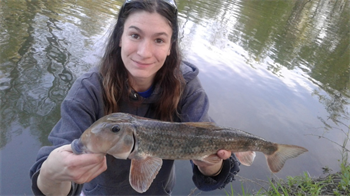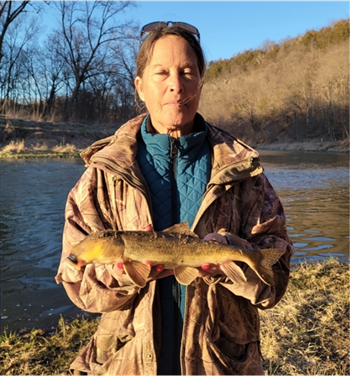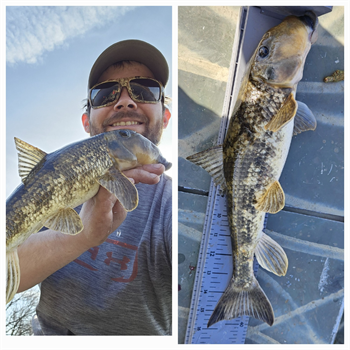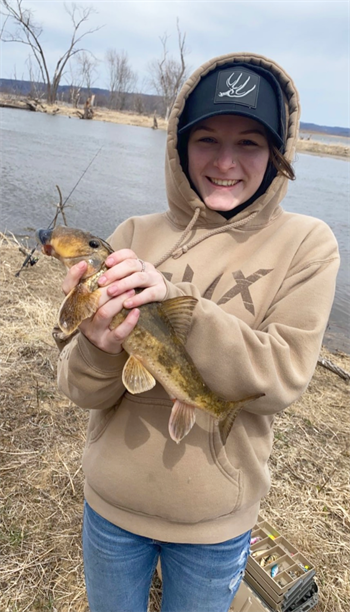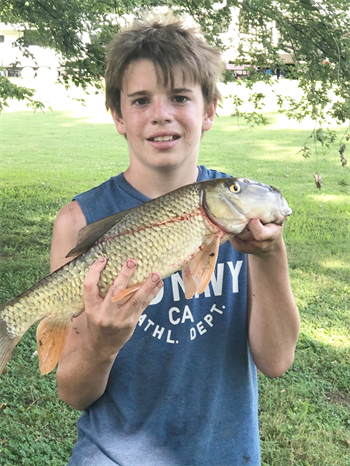Fish Iowa - Fish Species - Northern hog sucker
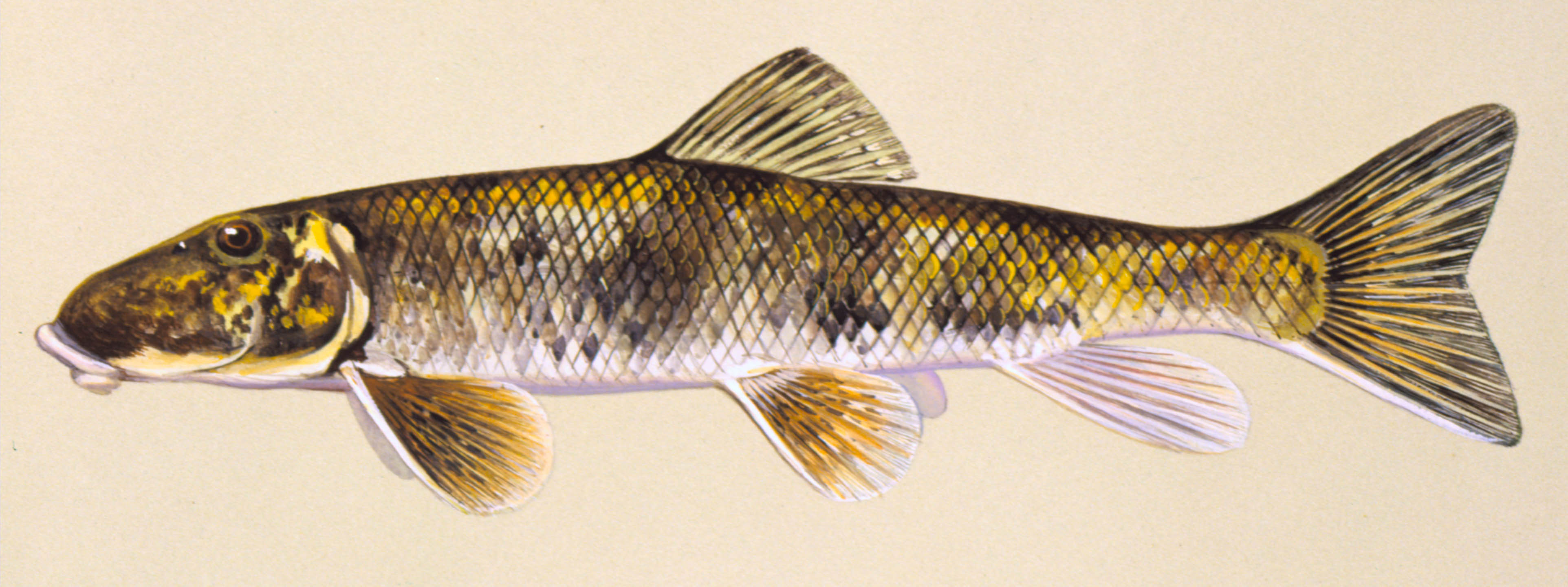
Characteristics
The hog sucker is not physically appealing, and its body conformation is disproportionately shaped. Its body is mottled brownish with a large, bony head, squarish in cross-section, with the interspace between the eyes broad and curved inward. Its eyes are closer to the gill cover rear margin than to the snout. The tapered body and tail are very slender. The dorsal fin is short with 10 to 11 rays. Lips are thick and covered with wart-like bumps. The air bladder has two chambers. Adults are small, usually 8-15 inches long, and weigh from one-third to 1 1/2 pounds.
Foods
Immature aquatic insects, small mollusks and crustaceans
Expert Tip
- No results found
Details
Hog suckers prefer clear streams, especially riffles where the current is rapid and the bottom scoured of silt-leaving substrates of gravel, rubble or boulders. It does not live well in lakes, river impoundments and large, turbid rivers.
This fish species is well adapted for stream life. The heavy bony head, slender tapering body, enlarged pectoral fin and small swim bladder lets it maintain itself in swift currents on the bottom in rocky riffles. Its behavior is more characteristic of darters and sculpins than suckers.
Spawning occurs in the third year of life in both sexes in late April or May when the water temperature reaches 60 degrees. Nests are not built, but the aggressive male fish cleans the gravel in riffles or at the downstream end of pools. They often gather in schools before spawning, but two or three males spawn a single female. The non-adhesive eggs are broadcast at random to hatch in 10 to 11 days. The amount of eggs produced is unknown. Hog suckers show little concern while spawning and may even be picked up by observers. Growth averages 1.5, 4.0, 6.9 and 9.0 inches for ages 1 through 4. This species is the host of the glocaidial stage of the elk toe mussel, Alasmidonta marginata.
Recent stream sampling information is available from Iowa DNR's biological monitoring and assessment program.
Distribution Map

Abundant in the upper reaches of rivers and streams in northeastern Iowa and in the entire Des Moines River drainage. Rarely taken in fish collections from the Mississippi River, occurring only in the upper reaches. Rarely found in natural or man-made lakes; never been reported in the Missouri River drainage.
See our most recent distribution data for this species on the Iowa DNR's Bionet application.
State Record(s)
Master Angler Catches
Fish Surveys
Tip: Click Species Length by Site, then use the dropdown to filter by fish species of interest.Where this Fish Is Found
Bear Creek
Cedar River (above Nashua)
Cedar River (Cedar Rapids to Moscow)
Cedar River (La Porte City to Cedar Rapids)
Joy Springs
Maquoketa River (trout portion)
Shell Rock River (above Greene)
Trout Run
Upper Iowa River (above Decorah)
Vernon Springs Impoundment
Volga River
Wapsipinicon River (Troy Mills to Oxford Junction)
Yellow River (Trout Section)
